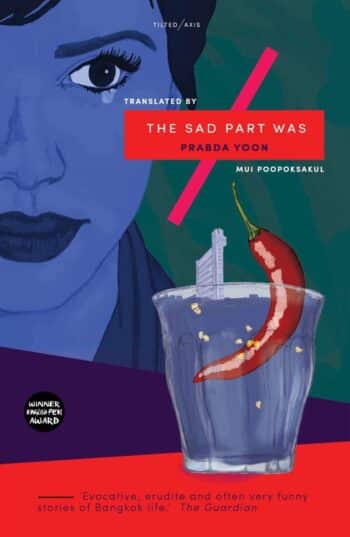Jeju, co to jest za książka!
Wciąga już esej tłumacza na samym początku, który wyjaśnia zawiłości tajskiego języka i opisuje, jak trudno jest oddać piękno tego języka po angielsku – ale naszym zdaniem wyszło mu to znakomicie. To powieść pełna opisów, często wręcz barokowo-poetyckich. Trochę tu buddyjskiej karmicznej drogi, trochę narracji rodem z opery mydlanej.
Narrację trzymają też bujnie rosnące i kwitnące rośliny – z pięknie brzmiącymi nazwami, które wytłumaczone są na końcu książki w specjalnym spisie. Czasami aż ma się ochotę zasłonić nos, żeby nie czuć intensywnego zapachu kwiatów: “The bitter aroma of ylang-ylang, melded with that of the mok flowers, Mon rose, and the faint misty scent of the pheep tree”.
"Stories, old stories of days gone by: about the fountain with the moody swan statue that Pran had spent months looking for because he couldn’t find one in a colour she liked so had ended up buying one in bare concrete, which turned out to be much more attractive; about the Loy Krathong ceremony in which Chareeya put lampu seeds in a floating basket in the hopes that the Goddess Ganga would bear them across the oceans to the faraway Pacific islands, but it barely made it past the gazebo before capsizing and Chareeya entreated Pran to make her another one. He succumbed to her pleas and defied the darkness of the banana grove to cut a fresh shoot when Chareeya promised to place only her bad karma in the vessel, even though she ended up smuggling a few lampu seeds away."











Na razie nie ma opinii o produkcie.